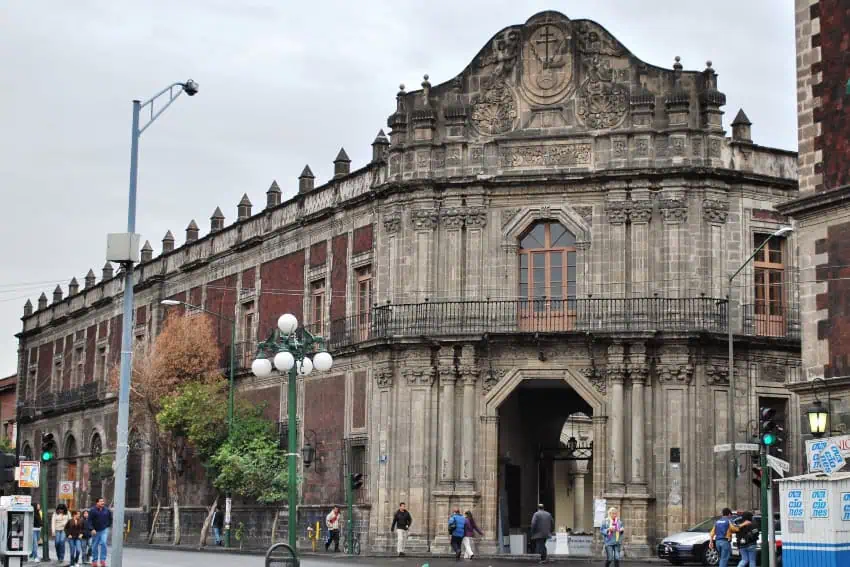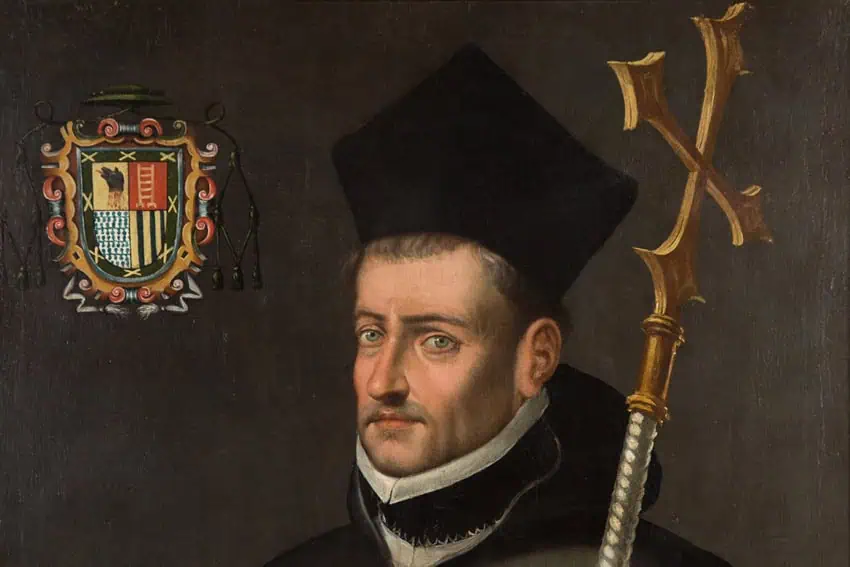In 1478, King Ferdinand and Queen Isabella welcomed a group of officials to Seville. These were the first inquisidores, appointed by Pope Sixtus IV and entrusted with saving the soul of Spain. The Inquisition was an organised body, led by a bishop, with a written code and the belief that God was on its side. The physical battle, the expulsion of Muslims who had occupied much of the country for seven hundred years, had been more or less won by this point, and the church could now concentrate on saving souls. To put it simply, the Spanish Inquisition was an institution for promoting religious conformity. By identifying and removing non-believers, it would both save misguided individuals from hell and the country from ruin. The inquisition was, from the beginning, an anti-Semitic body, for its original target was Jews who had converted to Christianity under financial and political pressure, but who were believed to follow their old religion in secrecy.
The Inquisition began approximately 15 years before Columbus reached the Americas and forty years before the first Spanish ships landed in Mexico. Once he had established himself in Mexico City, Hernán Cortés had no desire to be burdened with high-ranking church officials. The need, as he saw it, was for priests who could convert the native population, not arrogant bishops to interfere with the running of this immense land. Without high church officials, there could be no inquisition, but there was still sin to be rooted out, and as early as 1522, church officials tried a native man for keeping concubines.

How the Inquisition started in Mexico
As the years passed, officials in Spain started to worry about the growing number of their countrymen and women living 9,000 kilometers from the careful eye of the Catholic Church. Might Catholics fleeing heretic crimes in Spain take refuge in the colony? Could those who came out to America as good Catholics be corrupted by local customs, including, it was feared, taking on elements of voodoo from the African community? As trade between the Americas and Spain increased, the focus returned to the Jewish community. Many Jewish people in Spain had taken exile in Portugal. Generally, those who fled had both sufficient funds to relocate and sufficient devotion to continue following their religion. While their new Portuguese home was initially welcoming, they were still cut off from careers in the army or government, so many turned to trade, which was increasingly focused on the Americas.
As the colony in Mexico expanded, the Franciscan missionary Martín de Valencia was the first person to be given limited inquisitional powers. This was in 1524, and the original Conquistadors were still powerful men. Valencia appears to have upset some of them, likely by interfering in civil and criminal matters. He did not have the office, the staff, or the full blessing of Spain and was removed from office. In 1528, the role fell to Fray Vicente de Santa Maria. Having already made a brief visit to Mexico, Santa Maria returned with the title Vicar General, but he was removed from office in 1528. The burning of a blacksmith and a trader, both men accused of worshipping Judaism in secret, was seen as too fanatical. Additionally, the arrival of Juan de Zumárraga as the first Bishop of Mexico had made his position redundant.
In 1536, the Inquisitor General in Seville formally named the Mexican Bishop as Apostolic Inquisitor. Zumárraga was well qualified for his new responsibilities, having been one of the judges who had hunted down witches in the Basque province. He recruited staff, located a jail, and arranged a parade through the streets of Mexico City to celebrate the establishment of a formal, Spanish-blessed Inquisition. This was not universally popular, and two musicians who refused to play at the event received fines.
The Inquisition and Mexico’s Indigenous peoples
History records a few of the cases that the new body dealt with. There was the punishment of a fraudulent priest and, most notoriously, the trial of the Indigenous leader Don Carlos of Texcoco. Don Carlos was descended from the legendary pre-Hispanic leaders of Texcoco, and although he was accused of bigamy and idolatry, his burning at the stake in 1539 might well have had the political motive of crushing native opposition. Indeed, this was one of a series of 16 inquisitional trials conducted by Juan de Zumárraga that involved Indigenous leaders.
One case from this period is particularly well documented. In 2016, a London auction house offered a manuscript at an estimated price of US $1,500. The item in question was identified as a replica of the diary kept by Luis de Carvajal, a victim of the Inquisition who had kept a secret journal while imprisoned between 1595 and 1596. The original manuscript had vanished from Mexico’s National Archives in 1932 and was believed to have been stolen. Experts were called in for inspection, and the diary in the hands of the auction house was declared original. Historians, who usually worked with dull court documents, now had a personal account of the Inquisition’s work.
Carvajal came to Mexico in 1580 as a child. His family made money from slavery, and his uncle was the governor of Nuevo León. Both Carvajals, elder and younger, made enemies and were denounced. The younger Carvajal was first arrested in 1589 and was tortured until he revealed the names of over a hundred fellow Jewish people, including his mother. Written in tiny handwriting, his diary recalls how he fell to his knees upon hearing his mother’s tortured screams from the cell next door, where she was being pulled on the rack.
The arrival of the Inquisitor General

The Spanish presence in Mexico was expanding, with churches and monasteries being established around the country. As a result, many minor officials in the regions claimed the authority of an Inquisitor, albeit without training, supervision or any understanding of the Inquisition’s ways. For example, during the 1560s, church officials in Oaxaca and the Yucatán were quick to resort to torturing natives. In Toluca, there was a high-profile case when Francisco de Tejera was accused of practising Judaism. He was given 300 lashes and had his tongue mutilated. Protesters against such treatment boycotted Mexico City and sent petitions directly to Spain’s Royal Court. So in 1569, Philip II bowed to pressure and sent Inquisitor Generals to both Peru and Mexico.
Pedro Moya de Contreras was the first man to take the high title of Inquisitor General of Mexico. He had experience, having held a similar position in the Spanish city of Murcia, and he traveled with a staff that included a deputy, a fiscal, and a notary. The Inquisition in Mexico had transformed from a court that operated with the blessing of Spain, but recruited locally, to a Spanish-trained and appointed bureaucracy, backed by the full authority of church and monarchy. The Inquisitors arrived in Mexico in November 1571.
Once there, they worked quickly. A mass was called in the Cathedral, with all Spaniards living in Mexico City ordered to attend. Here, they were instructed to support the Inquisition’s work. The Inquisition was not a secret society, but worked publicly. Campaigns always began with an Edict of Grace, a period during which people could confess to whatever sins they thought they might have committed in return for a lighter punishment. In Spain, this period of grace was usually 30 or 40 days. Pedro Moya de Contreras gave the people of Mexico City just six days to confess their sins.
How the Inquisition in Mexico operated
The Inquisition was open to hearing denunciations, and it was a crime not to report offences of which you were aware. The Inquisition would then work to build a case, which might be followed by arrest and seizure of property. Arrest was by no means a certainty, and many cases were dismissed due to lack of evidence. Within eight days, a general interview would be held, mainly to gauge the accused’s character. A second trial followed, during which the charges were read.
The Inquisition believed in saving souls and, therefore, a confession was seen as all-important. There were generally two routes to this. A second prisoner might be inserted into the prison cell to befriend the suspect and get them to confess. In serious cases, where the defendant was proving stubborn, torture might be used. The rack or water torture, for instance, or a rope placed around the entire arm and slowly tightened. Now came the first sentencing. This was always harsh, in the hope it would finally bring a confession. If a confession was made, it might, even at this stage, be rewarded with a lesser sentence. However, any serious crime could still be punished by a lengthy term in prison, exile, fines, or banishment to a galley.
Capital punishment was generally reserved for those accused of the most serious crimes, but who were unrepentant. Death was usually by public burning at the stake, a ceremony known as the auto de fe. These executions were grand and ceremonial occasions, watched, as was the case with public hangings in Europe, by a large crowd. It was an opportunity for the church and the political powers to express their authority, and nobles, often including the Viceroy himself, would be in the decorated stands to witness the event. Staged on a Sunday, the accused were brought into the public square for a mass and a public reading of the charges. There was a last chance to repent, and although that would probably not save an accused’s life, they might be spared the flames and strangled instead.
The Mexican Inquisition changed over the years. Taking its lead from Spain, it expanded its role to cover not only heresy, but also Christian morals. These challenges were different in Mexico, where a far higher percentage of cases involved sexual offenses such as bigamy or homosexuality. Whether that was due to the crimes or the priority given to them by judges is uncertain. In Spain, there might be an occasional purge against witches, but the authorities slowly started to consider witchcraft as a superstition, rather than a serious threat to the church. In Mexico, witchcraft and sorcery thrived from the fusion of native, Spanish, and African traditions, and the Inquisition continued to take such charges seriously. The Inquisition in Mexico also cracked down on drugs, something not generally considered a problem in Spain. However, in Mexico, the use of hallucinogenic plants was linked to divination rituals and considered a form of heresy.
How the Inquisition in Mexico was misunderstood
Recent scholarship has argued that the Inquisition was no more brutal than any other court of that age. Torture was widely used in civil courts, and the Inquisition’s regulations imposed limits on the treatment of prisoners. Unlike in civil courts, torture was not permitted to “maim, mutilate, draw blood or cause any sort of permanent damage.” Instead, when possible, a doctor was present. By the standards of the age, these were quite remarkable concessions.
Indeed, as we have seen, people in Mexico had petitioned for a formal Inquisition to be established, as it was seen as a professional body guided and limited by its written laws. While there were no doubt elements of corruption, many of the Inquisition’s officials sincerely believed they were saving souls and wanted to achieve a confession by the quickest and easiest route. Torture was not undertaken lightly, and capital punishment even less so. While nobody would suggest the Inquisition was an enlightened body, it was probably more controlled and disciplined than other courts of the day.
Bob Pateman is a Mexico-based historian, librarian and a life term hasher. He is editor of On On Magazine, the international history magazine of hashing.